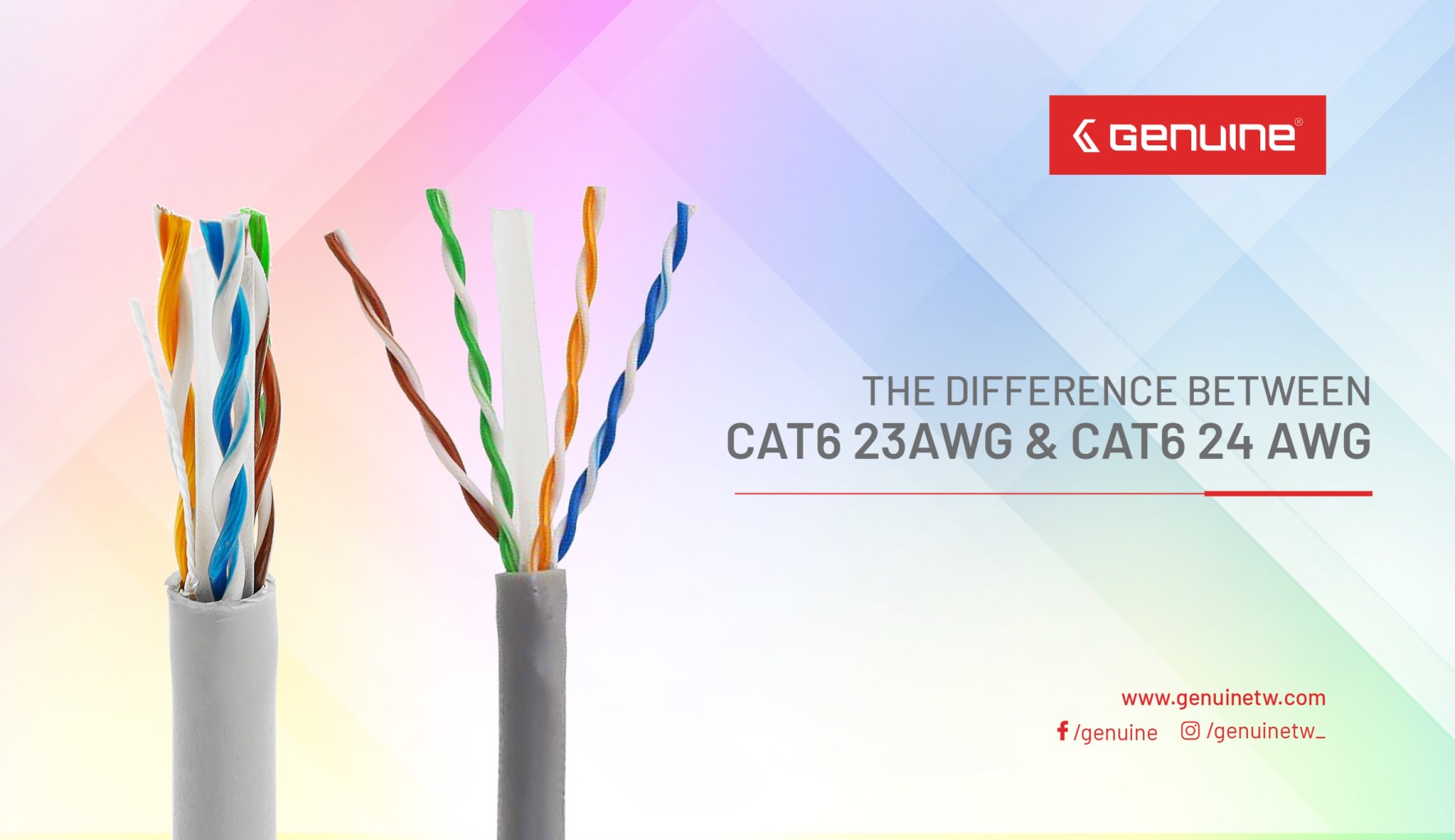
The difference between Cat6 23AWG & Cat6 24 AWG
American Wire Gauge (AWG), also known as the Brown & Sharpe wire gauge, is a logarithmic stepped standardized wire gauge system used since 1857, predominantly in North America, for the diameters of round, solid, nonferrous, electrically conducting wire. Dimensions of the wires are given in ASTM standard B 258. The cross-sectional area of each gauge is an important factor for determining its current-carrying ampacity.
Increasing gauge numbers denote decreasing wire diameters, which is similar to many other non-metric gauging systems such as British Standard Wire Gauge (SWG), but unlike IEC 60228, the metric wire-size standard used in most parts of the world. This gauge system originated in the number of drawing operations used to produce a given gauge of wire. Very fine wire (for example, 30 gauge) required more passes through the drawing dies than 0 gauge wire did. Manufacturers of wire formerly had proprietary wire gauge systems; the development of standardized wire gauges rationalized selection of wire for a particular purpose.
The AWG tables are for a single, solid and round conductor. The AWG of a stranded wire is determined by the cross-sectional area of the equivalent solid conductor. Because there are also small gaps between the strands, a stranded wire will always have a slightly larger overall diameter than a solid wire with the same AWG.
AWG is also commonly used to specify body piercing jewelry sizes (especially smaller sizes), even when the material is not metallic
What is the importance of cable gauge and how does it affect performance?
Cable Gauge
To understand the importance of gauge in the world of cables, we must first understand what goes inside them. Not what components they are made of, but what they actually carry through them. In the cable industry, it is referred to as current flow (of electrons) that runs throughout the wire. Imagine a flow of water that runs through a pipe. The wider the pipe is, the more water runs through it in shorter time.
How does that translate to cables? Resistance is how many electrons make it through the cable and do not evaporate. With a thinner cable, there is less flow and heat buildup, which causes the electrons to dissipate. The wider the cable, the easier it is for the electrons to pass through it.
Cable’s gauge indicates the thickness of the conductor in which the electrons flow. A 23AWG cable is 0.57mm wide, while a 24AWG cable is 0.52mm wide. Notice the lower the gauge – the higher the thickness.
To reduce resistance and allow for a better flow of electrons the diameter of the cable’s conductor must be increased. By doing so, resistance is automatically reduced over the cable.
Cable Performance
All this information brings up an important question – is the cable’s gauge the most important element in a it? The simple answer is no. The twisting rate is as important to the cable’s performance as the gauge. What may not be common knowledge is the importance of twisting rate for the performance of category cables.
24AWG with high quality copper and a very good twist rate may be able to provide the performance needed. But to assure performance and avoid taking chances, the EIA/TIA standards for Category 6 cables require 23AWG, NOT 24 AWG.
